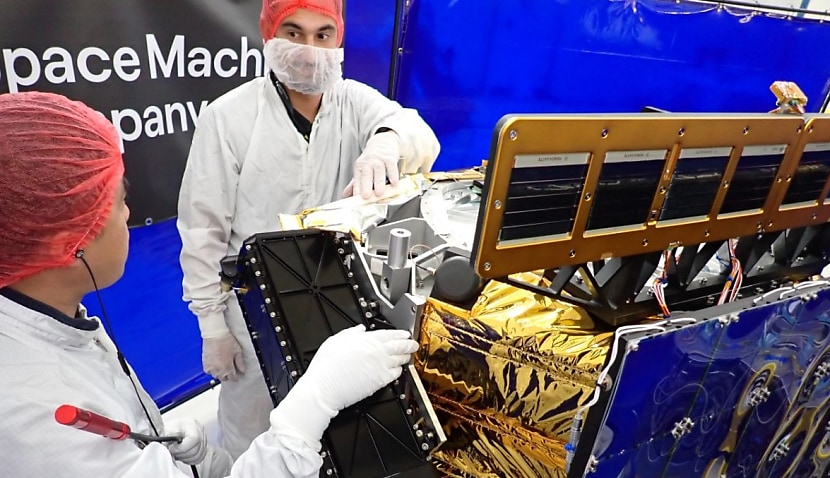
The team is now at the Vandenberg Space Force Base in California putting the finishing touches on the launch of its Optimus spacecraft next month.
Optimus is designed to offer a taxi-style service in orbit, physically moving other satellites to new positions. It’s hoped the technology could both reduce space debris and extend the life of other spacecraft that would otherwise be forced to shut down.
Rajat Kulshrestha, Space Machines CEO, said the completion was the “culmination of many years of tireless work” between its scientists, engineers and international partners.
“This unprecedented alliance has enabled us to push boundaries and open up new possibilities for how satellites are launched and operated,” he said.
“Together, we are paving the way to provide innovative services that extend satellite lifetimes, reduce space debris, and sustainably scale space activities for the benefit of all.”
Kulshrestha previously appeared on the Space Connect Podcast to explain how the pioneering company works. You can listen to the episode below.
Optimus carries payloads from a variety of partners, including Advanced Navigation, which designs and builds devices to help the navigation of spacecraft in orbit, and ANT61, which is creating robots that can operate in space on maintenance tasks.
At 270kg, Optimus is also set to be the largest Australian-designed and built satellite ever to go into space.
The spacecraft is being integrated into the Transporter-10 stack and will sit atop one of Space X’s Falcon 9 rockets. The Transporter 10 mission is a dedicated rideshare flight to a sun-synchronous orbit with small microsatellites and nanosatellites.
It comes months after Space Connect reported how Space Machines Company would collaborate with US company Orbit Fab which specialises in refuelling spacecraft in orbit.
The pair will work together this year, with QR Code-like docking markers attached to both firms’ spacecraft so they can conduct “rendezvous and proximity operations manoeuvres” to test their respective innovations.
“This collaboration represents a significant milestone in the advancement of in-space servicing technologies,” said Kulshrestha.
“It is the first purely commercial partnership of its kind and will serve as a pioneering example of in-space validation of these groundbreaking technologies.”
SMC said the collaboration would also improve space sustainability by reducing debris and creating an “on-orbit circular economy”.
“By partnering to undertake a suite of safe, secure, and sustainable proximity operations, Orbit Fab and Space Machines Company will play a pivotal role in defining this developing commercial technology to unlock on-orbit refuelling, servicing, repair, and de-orbit innovation for the global space sector,” it said.

Adam Thorn
Adam is a journalist who has worked for more than 40 prestigious media brands in the UK and Australia. Since 2005, his varied career has included stints as a reporter, copy editor, feature writer and editor for publications as diverse as Fleet Street newspaper The Sunday Times, fashion bible Jones, media and marketing website Mumbrella as well as lifestyle magazines such as GQ, Woman’s Weekly, Men’s Health and Loaded. He joined Momentum Media in early 2020 and currently writes for Australian Aviation and World of Aviation.
Receive the latest developments and updates on Australia’s space industry direct to your inbox. Subscribe today to Space Connect here.









